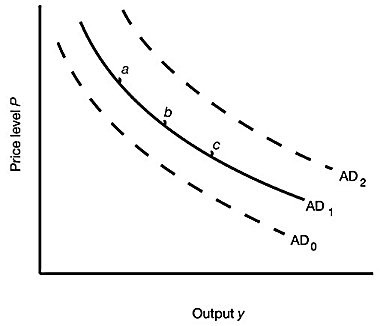
 Figure 14.1 shows three aggregate demand curves. A shift from curve AD1 to curve AD2 could be caused by a(n):
Figure 14.1 shows three aggregate demand curves. A shift from curve AD1 to curve AD2 could be caused by a(n):
A. increase in the money supply.
B. increase in taxes.
C. increase in the price level.
D. decrease in government spending.
Answer: A
You might also like to view...
Income taxes are taxes paid on wages and investment income
Indicate whether the statement is true or false
Suppose Jason owns a small pastry shop. Jason wants to maximize his profit, and thinking back to the microeconomics class he took in college, he decides he needs to produce a quantity of pastries which will minimize his average total cost
Will Jason's strategy necessarily maximize profits for his pastry shop? A) No; In order to maximize profit, Jason would never want to produce the quantity where average total cost is minimized. B) Yes; Since Jason's pastry shop is in a perfectly competitive market, the only way to maximize profit is to produce the quantity where average total cost is minimized. C) Not necessarily; Depending on demand, Jason may maximize profit by producing a quantity other than that where average total cost is at a minimum. D) Not necessarily; This strategy will only maximize Jason's profit in the long run, but not in the short run.
Suppose that Country A has an absolute advantage over country B in the production of both wheat and cloth. The opportunity cost of 1 unit of wheat is 2 units of cloth in Country A and 3 units of cloth in Country B. If each country specializes in producing the good in which it is relatively more efficient and then trades for the other good, it follows that
a. all the resulting gains in consumption will go to Country A. b. all the resulting gains in consumption will go to Country B. c. each country will experience half the resulting gains in consumption. d. the allocation of the resulting consumption gains will be determined by bargaining between the two countries.
The authors explain that the international copper cartel (CIPEC) has been largely ineffective in raising the price of copper in world markets, and the reason is mainly due to the relatively elastic demand for copper
Suppose the cartel recognized that there are multiple uses for copper, and some of the uses have few substitute products (e.g., copper electrical wire) while others have several close substitutes (e.g., copper water pipes). To increase profits, the cartel could raise the price of copper in the sub-markets with relatively inelastic demand. What else would the cartel have to do in order to make the cartel's action effective? A) The cartel would have to seek permission from the U.S. Department of Justice. B) The cartel would have to get the cooperation of all other copper producers in order to raise the price by some positive amount. C) The cartel would have to find a way to keep the buyers in the low-price market from reselling the copper to buyers in the high-price market. D) none of the above